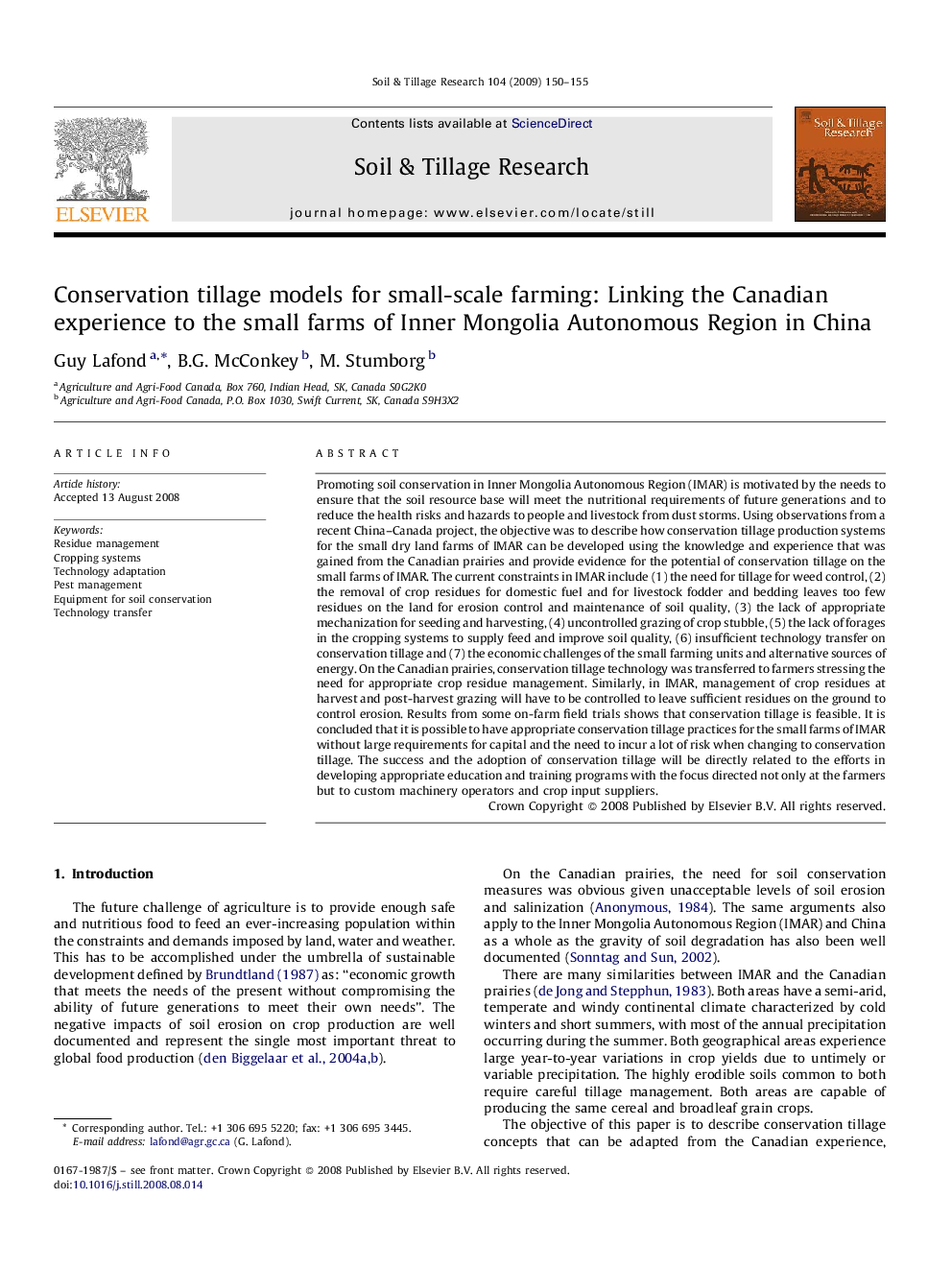| کد مقاله | کد نشریه | سال انتشار | مقاله انگلیسی | نسخه تمام متن |
|---|---|---|---|---|
| 306404 | 513093 | 2009 | 6 صفحه PDF | دانلود رایگان |

Promoting soil conservation in Inner Mongolia Autonomous Region (IMAR) is motivated by the needs to ensure that the soil resource base will meet the nutritional requirements of future generations and to reduce the health risks and hazards to people and livestock from dust storms. Using observations from a recent China–Canada project, the objective was to describe how conservation tillage production systems for the small dry land farms of IMAR can be developed using the knowledge and experience that was gained from the Canadian prairies and provide evidence for the potential of conservation tillage on the small farms of IMAR. The current constraints in IMAR include (1) the need for tillage for weed control, (2) the removal of crop residues for domestic fuel and for livestock fodder and bedding leaves too few residues on the land for erosion control and maintenance of soil quality, (3) the lack of appropriate mechanization for seeding and harvesting, (4) uncontrolled grazing of crop stubble, (5) the lack of forages in the cropping systems to supply feed and improve soil quality, (6) insufficient technology transfer on conservation tillage and (7) the economic challenges of the small farming units and alternative sources of energy. On the Canadian prairies, conservation tillage technology was transferred to farmers stressing the need for appropriate crop residue management. Similarly, in IMAR, management of crop residues at harvest and post-harvest grazing will have to be controlled to leave sufficient residues on the ground to control erosion. Results from some on-farm field trials shows that conservation tillage is feasible. It is concluded that it is possible to have appropriate conservation tillage practices for the small farms of IMAR without large requirements for capital and the need to incur a lot of risk when changing to conservation tillage. The success and the adoption of conservation tillage will be directly related to the efforts in developing appropriate education and training programs with the focus directed not only at the farmers but to custom machinery operators and crop input suppliers.
Journal: Soil and Tillage Research - Volume 104, Issue 1, June 2009, Pages 150–155